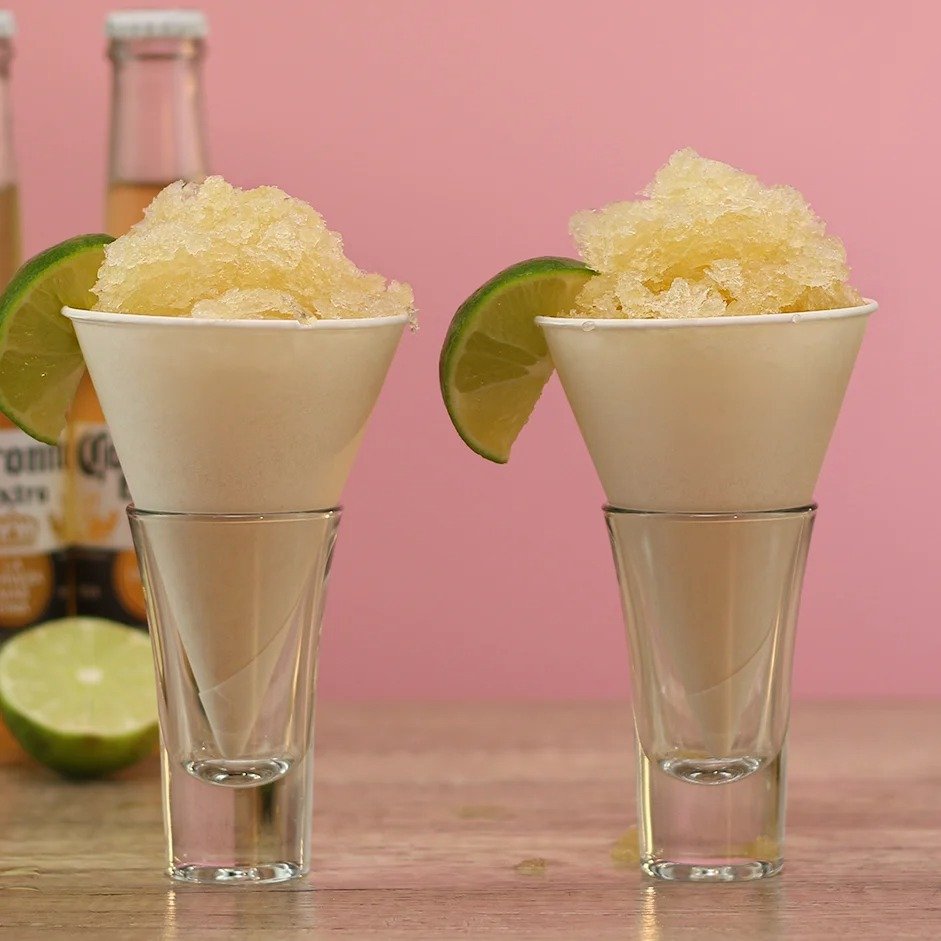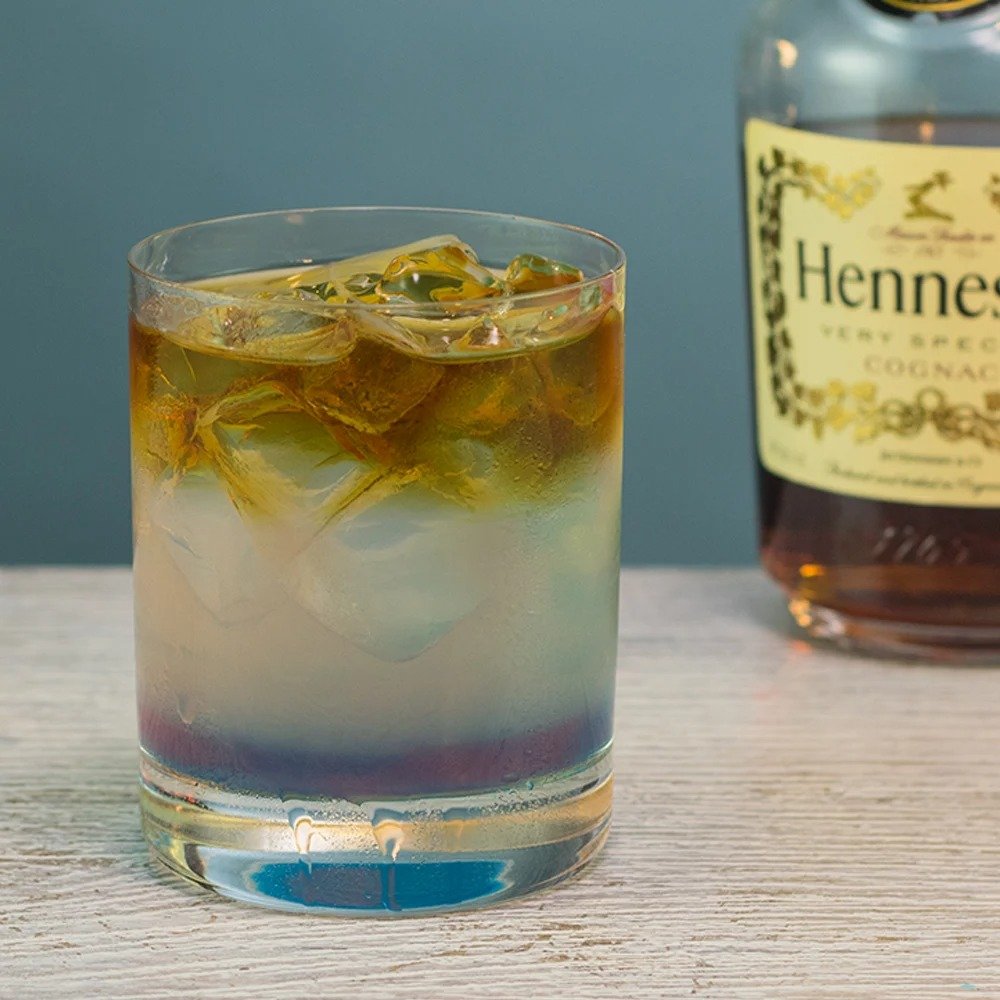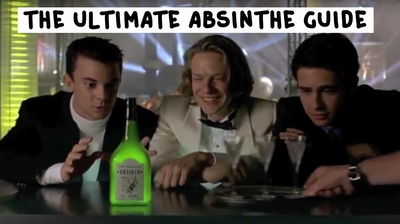
The Ultimate Absinthe Guide: Everything You Need to Know!
WELCOME TO ABSINTHE
Everybody buckle up 'cause we're about to learn about absinthe, one of the most potent spirits out there. In fact, it's so potent that people have blamed it for hallucinatory trips, murderous rampages, and other generally dastardly behavior. But is the "green fairy" as treacherous as all the rumors would have you believe? Should you even bother keeping a bottle of it in your home liquor cabinet? https://giphy.com/embed/YZixgKhw3WxR6 To answer that question, we'll need to take a quick look at how absinthe is made, where it comes from, and how to drink it. And even though you'll come to learn that many of the horror stories surrounding absinthe are greatly exaggerated or even patently false, you'll still want to take plenty of precautions when mixing up drinks with this bad boy. So sit back, grab yourself some Blanche, a glass, a slotted spoon, a sugar cube, and some fire, and prepare to learn everything you'll ever need to know about absinthe.WHAT IS ABSINTHE?
Although it may be surprising to learn that absinthe isn't a demonic juice delivered to Earth in a glass-skull bottle by the Devil himself, it is indeed a normal alcoholic creation made by mere human mortals. So what exactly is it? Basically, absinthe is a high alcohol by volume (ABV) distilled spirit that's flavored with botanicals, which include, but are not limited to, anise, wormwood, and fennel. In terms of how absinthe is made, you can more or less think of its production process as being very similar to that of gin. Just as gin laces what is essentially vodka with botanical essences, so too does absinthe. The big differences are that absinthe uses different botanicals, and, of course, is much higher ABV. Also note that gin is usually made from a base alcohol fermented and distilled from grains, whereas absinthe is — at least traditionally — made from alcohol fermented and distilled from a white grape spirit, a.k.a. eau de vie. https://giphy.com/embed/fyyF9enuYGGZy While absinthe traditionally takes on a green color thanks to the fact that it often contains chlorophyll, it can also be bottled as a clear spirit. So even though absinthe has earned the moniker "la fée verte" (the green fairy), it can vary in color depending on who's making it and where it's being made. In terms of the broad strokes of where absinthe comes from, if somebody catches you at a home party, or bar, and wants a quick rundown, what you'll need to know is that it originated in 18th century Switzerland and became especially popular in 19th- and 20th-century France. During that time it began to be associated with Bohemian culture, which made it popular with legendary artists and writers including Ernest Hemingway, James Joyce, Edgard Allen Poe, Pablo Picasso, Vincent van Gogh, and Oscar Wilde. https://giphy.com/embed/JDwUJgyZfC2Xe Because of absinthe's reputation as a spirit that could really make you go insane in the membrane, it was banned by 1915 by multiple countries including the U.S., Belgium, Switzerland, and yes, even France. But, starting in the 1990s, absinthe started making a comeback as a legal spirit in the countries where it was formerly outlawed, and now it's on an upswing again in terms of popularity and reputation. With this general overview of absinthe in mind, let's take a more in-depth look at how absinthe evolved over time since its first creation in 18th century Switzerland!A BRIEF ABSINTHE HISTORY
Now that we know what absinthe is, let's take a little dive into its history so we can fully understand what this potent beast of a liquor is all about. As always, this will be a very brief overview, and will focus mainly on the birth of absinthe, how it became popular, and what role it's played in the drinking game in the U.S. BUT FIRST, A NOTE ON ALL THOSE ABSINTHE MYTHS Does absinthe make you hallucinate? Is it really illegal in the U.S.? Can it make you write like Hemingway or paint like Picasso? No, no, and heck no. While you'll often here that absinthe is a hallucinogenic, it most certainly is not — at least the absinthe you can buy on store shelves isn't. It's only improperly made absinthe that can cause real neurological trouble, just as improperly made moonshine can cause temporary blindness or brain damage. So yes, you can totally discard this myth. Although do keep in mind that absinthe is still extremely strong, and will easily get you plastered much faster than most other liquors out there. https://giphy.com/embed/Z1OYP5iS9tM9G As far as aiding in your creativity, maybe it can, that's hard to say. But don't pound a shot glass full of absinthe and expect to be the next van Gogh. There is absolutely no record of anybody ever experiencing any kind of prodigy effect with absinthe — sorry, but if you want to be a great artist, it still looks like you're just going to have to work at it. Finally, is absinthe illegal in the U.S.? Nope! Since 2007 absinthe has been available legally in the U.S., although thujone levels are closely regulated. (By the way, thujone, a chemical compound found in wormwood, does not cause hallucinations, although in the right dosage, it can kill you....) WHAT IS WORMWOOD EXACTLY? In order to fully understand where absinthe came from, it's important to learn a little about one of its key ingredients, wormwood, because that was the main catalyst in terms of making absinthe a distinctive spirit. What is wormwood exactly? It's a species of plant, Artemisia absinthium, which is found in temperate regions of Eurasia and Northern Africa, and more recently, Canada and the Northern U.S.
An image of wormwood (Artemisia absinthium). Image: wikimedia / David Monniaux
Starting in the second century BC, wormwood was used as a folk medicine that was intended to help soothe or even cure stomach-related issues. It was also prescribed by Hippocrates, who's considered to be one of the first physicians, for anemia, rheumatism, jaundice, and menstrual pain. Later, in the 1400s, wormwood was used as a medication to help rid the stomach of stomach worms — seriously, the medical profession was all about using this plant to help clean out the gut. It was thought to be so effective that it was even burned and used to fumigate houses infected with the bubonic plague in the 1600s and 1700s. In terms of how this wormwood medication eventually became absinthe, that began with a French doctor who escaped the French Revolution by moving to Switzerland. Probably. NO ORDINAIRE DOCTOR In the late 18th century, wormwood was finally used in conjunction with alcohol by a French doctor by the name of Pierre Ordinaire. Ordinaire, who left France to avoid the French Revolution, took up residence in Switzerland, where he practiced medicine and came up with a signature recipe for absinthe (alcohol, wormwood, anise, and fennel) as a digestive aid and cough syrup. One caveat with this origin story, unfortunately, is that it may not be true. While some historians are certain that Ordinaire came up with the proprietary recipe for absinthe, others claim it was the Henriod sisters of France, who were coming up with medicinal cures for people at around the same time that Ordinaire was practicing medicine. Either way, it was invented by somebody French in the late 18th century. https://giphy.com/embed/kJbFZ0Zj7mTza ABSINTHE BECOMES POPULAR IN FRANCE Roughly 40-50 years after Ordinaire's (or the Henriod sisters') absinthe concoction was first made, it exploded in popularity among the general French population. But this explosion didn't happen the way you probably think it did: It really took off because French soldiers got real sick in Nigeria and needed something to — you guessed it — settle their stomachs. See, France had "conquered" Algeria in the mid-eighteenth century, and it had sent 100,000 troops there to maintain order. Unfortunately for the troops, heat and unfiltered water began to have seriously negative effects on their health, and they needed something to help them deal with all of their ailments: enter wormwood.
In a café or L’Absinthe by Edgar Degas. Image: Wikimedia / Creative Commons
To treat their fevers and diseases (such as malaria) as well as ward off insects, the soldiers began to gulp down drinks laced with wormwood. But they didn't just put the wormwood in water, they also put it in wine, which removed some of the plant's bitterness. When they returned from their outposts in Algeria, they brought their appetite for the gnarly, medicinal combination with them, and continued to drink it recreationally. It became so popular, in fact, that the French started calling the period of time between 5PM and 7PM "l'heure verte," which translates to "the green time." Y'know, 'cause the absinthe everyone was pounding was green. And when we say "everyone," you can take that literally, as at this point absinthe had caught on with people from all social classes, not just soldiers. ABSINTHE IN THE 20TH CENTURY Despite the massive popularity of absinthe in France in the second half of the 19th century, it did eventually become a pariah not just in France, but in multiple nations across the globe. This was due to the fact that it had become associated with a lot of really horrible events and behavior, such as schizophrenia, violent crimes, and other social disorders. This image of absinthe as an instigator of evil acts was enforced by the temperance movement, which aimed to mitigate alcohol usage amongst the population. And then there was the Jean Lanfray incident in 1905.... If you haven't heard of it, and you probably haven't (it's esoteric, people, we're not judging your intellect!), the Jean Lanfray incident was a multiple murder that happened in Switzerland in 1905, and you guessed it, it was blamed on absinthe. Except, it shouldn't have been. At least not entirely.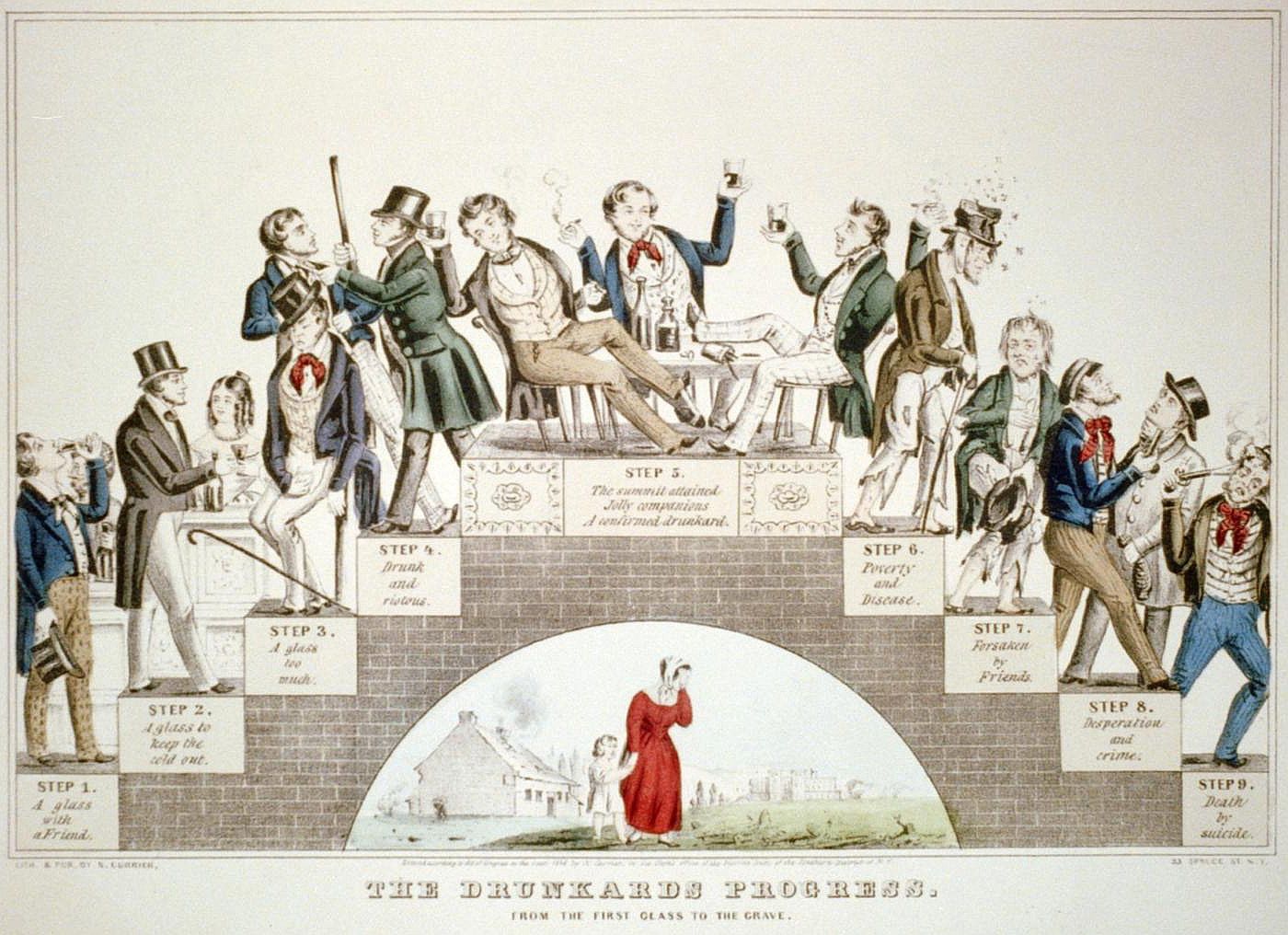
"The Drunkard's Progress" by Nathaniel Currier — a piece of temperance movement propaganda. Image: Wikimedia / Creative Commons
Jean Lanfray, who was actually French, had been drinking all day — including wine, brandy, and other hard liquors — and once he got home, he murdered his pregnant wife and two children in a fit of rage. But even though he had been drinking multiple types of alcohol, including six glasses of wine, his behavior was blamed solely on the absinthe he'd been drinking, as it was the target of government scrutiny, and the aforementioned temperance movement, at the time. Incidentally, three days after being arrested, Lanfray committed suicide. As a result of absinthe's reputation, and the Lanfray incident specifically, it soon became outlawed in Switzerland, Belgium, Brazil, the Netherlands, France, and the U.S. (among other countries). But, because prohibition of liquor — or really anything — never works out as intended, it was only a matter of time before absinthe would come back from the ban, ready to be consumed by the masses once again. ABSINTHE RISES Cut to roughly 70 years after all the bans were put into place in much of Europe and North America, and the resurgence of absinthe begins. Yes, it was the glorious decade of the 1990s that saw absinthe come back from its dark ages. In terms of how this happened, it was a quick, yet piecemeal process that saw the legalization and/or re-popularization of absinthe happen in each of the countries where it was formerly banned. For example, in the UK, where absinthe had never actually been formally banned, Czech distillery Hill's absinthe began to bring their product to market, because, why not? In the U.S., celebrities such as Johnny Depp, Hunter S. Thompson, Eminem, and Marilyn Manson began to popularize the drink — Depp and Thompson had supposedly enjoyed a decent amount of the stuff during the filming of Fear and Loathing in Las Vegas. https://giphy.com/embed/F6DzdmLuqjo6A In 2004, the Swiss government overturned its 1907 ban, voting to legalize absinthe once again. The Netherlands followed suit in the same year when the government ruled that its 1909 absinthe ban was invalid under Dutch law. A similar story unfolded, in one way or another, in all of the other countries that had formerly banned absinthe, and now it's back on the scene, ready to be drunk! Responsibly! So with this rebirth in mind, let's take a look at how absinthe is made so we can better appreciate what we will soon be pouring down our gullets.HOW ABSINTHE IS MADE
Now that we know what absinthe is and how it was discovered/became a (somewhat) mainstream alcohol, it's time to learn all about how it's made. And despite absinthe's extraordinary potency and unique coloration, the actual process for making it is quite simple. In fact, as Difford's Guide notes, "The similarities between the distillation of absinthe and gin are striking." And what does it take to make gin? Basically, you take an already distilled and fermented alcohol, steep botanicals in it, then re-distill it one or more times. This is the same process for making absinthe, except instead of steeping botanicals like roots, seeds, fruit peels, and juniper berries, you steep anise, wormwood, and fennel. Other botanicals are also often added to the mix for absinthe, including hyssop and melissa.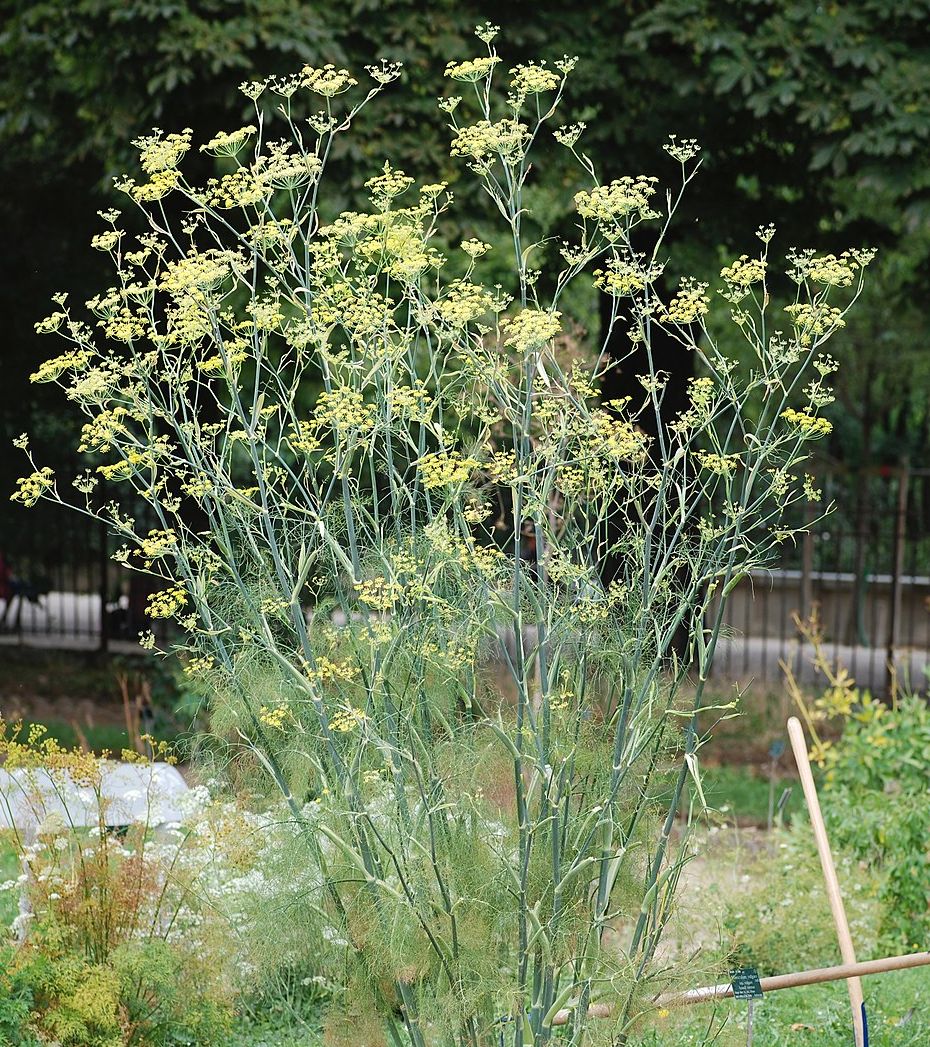
Fennel. Image: Wikipedia / Alvesgaspar
To recap how exactly this process takes place, as well as explore the nuances of the absinthe production process, check out the steps below: FERMENTING AND DISTILLING YOUR BASE ALCOHOL Although fermentation and distillation of the base alcohol made from white grapes, grains, or other organic materials with fermentable sugars is, of course, an essential part of making absinthe, it isn't really unique to the absinthe production process. So, because we cover this in depth in several of our other alcohol 101 guides, we're going to skip it here. If you want a refresher, just take a look at the Ultimate Gin Guide. STEEPING YOUR BOTANICALS IN THE BASE ALCOHOL/RE-DISTILLING THE ALCOHOL (A.K.A. MACERATION) Once you have your fermented and distilled alcohol made from one organic material or another, it's now time to steep your fennel, wormwood, and anise in a process known as maceration. As a reasonable way of thinking about this step, just imagine steeping a teabag in hot water, except instead of a teabag, you have free floating botanicals, and instead of water, it's 50% ABV alcohol.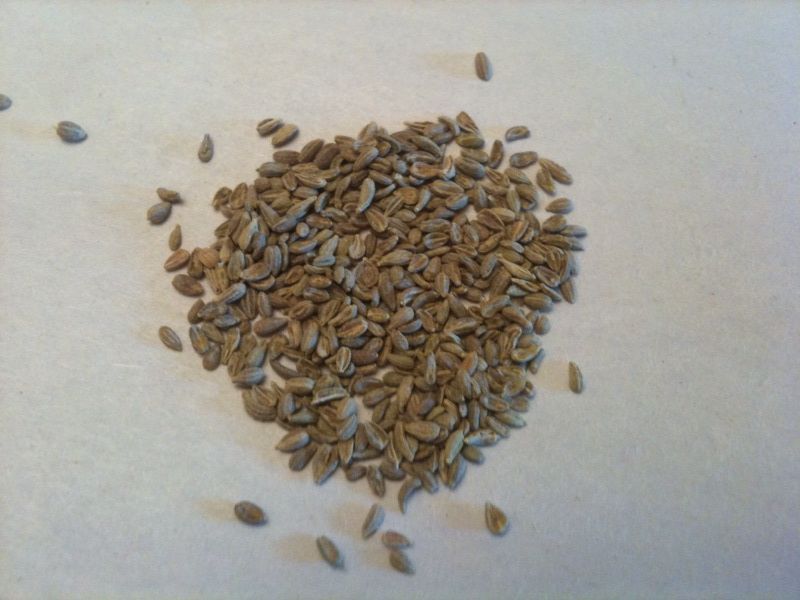
Anise seeds. Image: Wikipedia / OttawaAC
Once the botanicals have been steeped in the alcohol — possibly for days, although the amount of time depends on distillery — it's time to re-distill it. As a quick refresher, below is a brief explanation of how distillation works. ("Re-distillation" is the same thing as distillation, except you're taking an alcohol that has already been distilled and you're distilling it again.) Distillation: The distillation process, in general, is pretty simple: What you’ll need to do is take your wash and place it in the bellies of stills so that the ethanol and the water in the wash can be separated. This happens by lighting a fire underneath the bottom of the still, which sends the ethanol racing up the insides of the stills, where it’s collected from openings at the other end. The reason that mostly ethanol vapor races up the necks of the stills and most of the water stays in the bottoms is because of the differing boiling points of the two liquids — ethanol has a lower boiling point of 173.1 degrees Fahrenheit, while water has a boiling point of 212 degrees Fahrenheit. This distillation process is then usually repeated in order to up the ABV even further.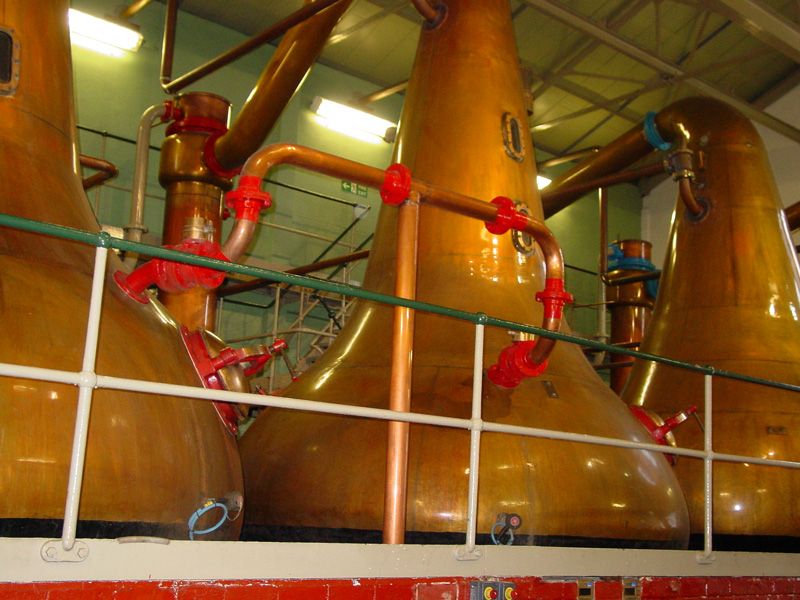
Pot stills sometimes used for distilling the base alcohol for absinthe. Image: Wikipedia / Creative Commons
At this point, a given distiller may choose to re-distill the absinthe once or twice in order to clear out unwanted flavor compounds (remember that thanks to chemical interactions between the alcohol and the copper, certain molecules that impart fowl flavors are removed) as well as up the ABV percentage — the ABV of absinthe can go as high as 74%, and in some very rare cases, 90%. While absinthe can be bottled right after the maceration step (sometimes cut with water to lower the ABV, sometimes not), this would only result in a clear absinthe known as Blanche or la Bleue. To make traditional green absinthe ("absinthe verte"), on the other hand, you'd also need to macerate the alcohol with the chlorophyll of whole herbs, which would impart the green coloration. Note that the green coloration doesn't necessarily come from the chlorophyll — it can also be added using artificial coloring, which is, expectedly, considered to be the cheaper/less classy way of turning the absinthe green. (OPTIONAL) AGING/BOTTING THE ABSINTHE Once you have your clear or green absinthe, it's time to test it to make sure it has the proper ABV. Once you've done that, bang, just bottle it, and you're good to go! Except, maybe you aren't! Although you may not think of absinthe as being a barrel-aged spirit, it turns out that many distilleries do indeed barrel (or vat) age their absinthe. This, of course, will cause the barrel's flavor compounds to be picked up by the absinthe (remember that alcohol is a killer solvent), and will also smooth out the taste. And how long does this aging process last? Some distilleries like to store their absinthe for three years. SIDE NOTE: COLD MIXED ABSINTHE Although traditional (read: legitimate) absinthe is made via steeping botanicals and performing multiple distillation cycles, there is another way to make absinthe: by cold mixing it. This process is much cheaper and less time consuming, and consists of blending flavoring essences and artificial coloring in commercial alcohol, in much the same way flavored vodkas are made. Unfortunately, or fortunately if you're looking for a cheaper absinthe to buy, this is in fact the method many absinthe distilleries use. The upside of this method — aside from it producing absinthes that are cheaper — is the fact that their ABVs can approach something like 90%, which is obviously downright ridiculous. https://giphy.com/embed/7xJL9r6BW8hsQTHE DIFFERENT CATEGORIES/TYPES OF ABSINTHE
Alright, we have what absinthe is, the history of absinthe, and how absinthe is made all under our belt now, so it's time to learn about the different types of absinthe that way you'll know what you're dealing with when you hit up your local market or liquor store. Luckily, unlike whiskey, brandy, or even tequila, that aren't that many types of absinthe you'll encounter when choosing what to stock your home bar with. So check out these absinthe types, commit them to memory if you can, and when you go to buy some of this delicious green fairy goodness you'll know exactly what you're doing. THE TYPES OF ABSINTHE Blanche or la Bleue — Blanche (or la Bleue in Switzerland) is bottled right after distillation (and maybe being cut with water to lower the ABV) and is clear. The name la Bleue was a term used for Swiss bootleg absinthe, but is now a regular term used for any type of Swiss absinthe. Verte — Verte (which is "green" in French) is the traditional green absinthe that earns its color from either having chlorophyll steeped in it or being mixed with an additive. Again, keep in mind that Verte absinthe that gets its color from an additive rather than chlorophyll is generally not considered to be a comparable Verte because it doesn't have the same herbal flavoring.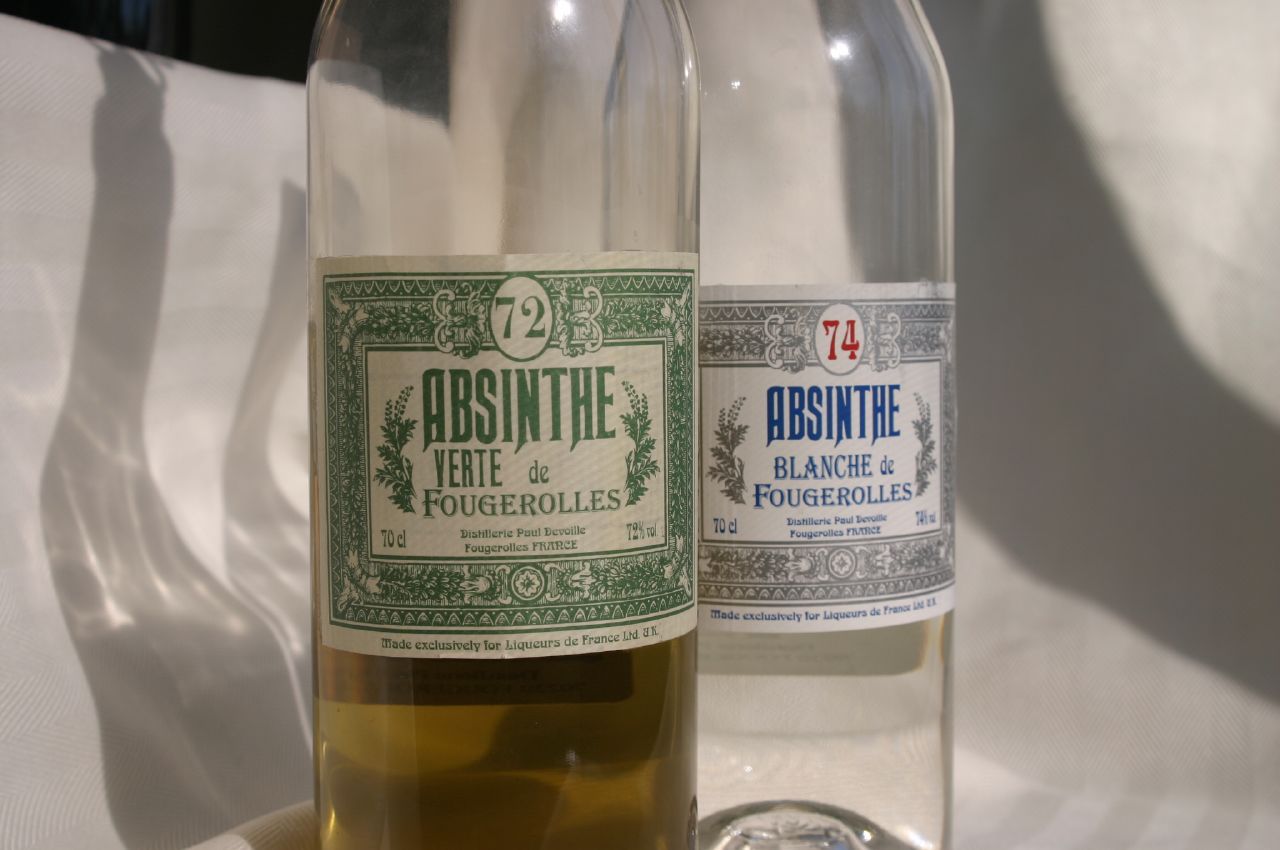
Absinthe verte and absinthe blanche. Image: Flickr / Madison Scott-Clary
Absenta — Absenta (which is Spanish for absinthe) is obviously still an absinthe, although it defers from French absinthe as it uses Alicante anise, and often offers a more citrus-centric flavor profile. Hausgemacht — Hausgemacht (which is german for "home-made") is home-distilled absinthe that's made by individuals at home for personal use. It's generally referred to as a "clandestine" production because of the fact that Hausgemacht absinthe often isn't regulated by the government; producers don't want to pay the taxes and/or they enjoy the idea of doing something that's a bit naughty (read: illegal). Bohemian-style (or Czech) absinth — Bohemian-style absinth (note the absence of the "e") could be considered by some to not actually be a legitimate absinthe because it doesn't include anise, and often times doesn't even have other traditional absinthe flavorings such as fennel either. It is mostly produced in the Czech Republic, which is where its Bohemian or Czech moniker comes from. What does qualify Bohemian-style absinth as a genuine absinthe is that it contains wormwood and has a high ABV.HOW TO DRINK ABSINTHE
Finally, we get to the fun part! How to drink absinthe. If you've read all of the above material, you now know what absinthe is, where it comes from, how it's made, and all of the different types, which leaves only one thing: knowing how to properly imbibe this wild stuff. (OK, actually there's a couple more things below, but we promise, it's brief, digestible information.) So without further ado, let's learn how the connoisseurs like to down this stuff so you can look like a pro should you ever catch yourself in front of a modern day Hemingway or Picasso. SELECTING THE RIGHT ABSINTHE First thing you want to do when you start drinking absinthe is pick out a good, high-quality product. Obviously the quality of the absinthe is less important if you're just going to be mixing it in cocktails, but if you want to drink it in one of the traditional ways — which calls for drinking it alone or with a little sugar and/or water — then you'll really want to find something that is legitimately delicious. Yeah, that's right, absinthe can be delicious! (If you really love alcohol and licorice.) How do you know if an absinthe is decent quality? There are few signs to look out for aside from a relatively high price tag. These signs include: a relatively high ABV (although not ridiculously high, we're talking about somewhere between 62 and 74% ABV); the use of natural herbs if you're buying green absinthe; the absinthe going cloudy in the glass once you add water — this is called the louche effect, and is produced by the precipitation of herbal essential oils.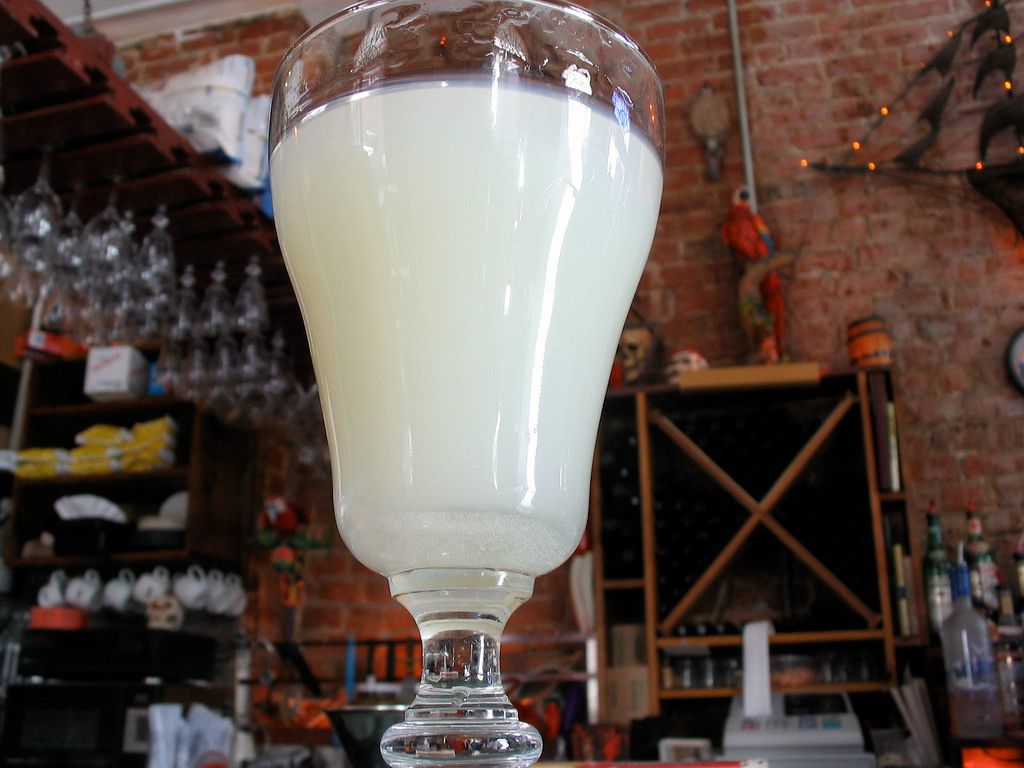
Absinthe demonstrating the louche effect. Image: Flickr / Tim
If you're looking for specific high-quality absinthe recommendations, refer back to the previous section. THE FRENCH METHOD The French method for drinking absinthe is all about grabbing a slotted spoon (pictured below), a glass of absinthe, a sugar cube, and an ice water dripper. The reason for this little combination of tools, sugar, and absinthe is to perfectly sweeten and dilute the absinthe by dripping the cold water onto the sugar cube so that it melts and drips into the absinthe. The combination of the melted sugar and the added cold water (to the tune of 1 part absinthe and 3-5 parts water) will dilute the absinthe and help it to be far more palatable than it otherwise would be. This is ideal if you're sipping on your absinthe, which you should be if you want to drink it like a true connoisseur. Seriously, this is considered by many to be the most traditional and therefore most pure way to drink absinthe.
A collection of absinthe spoons. Image: Wikimedia / SDC
And don't freak out when you see the absinthe start to turn opaque after diluting it with the water — remember that's the louche effect at play, and it most likely means you're working with a quality absinthe.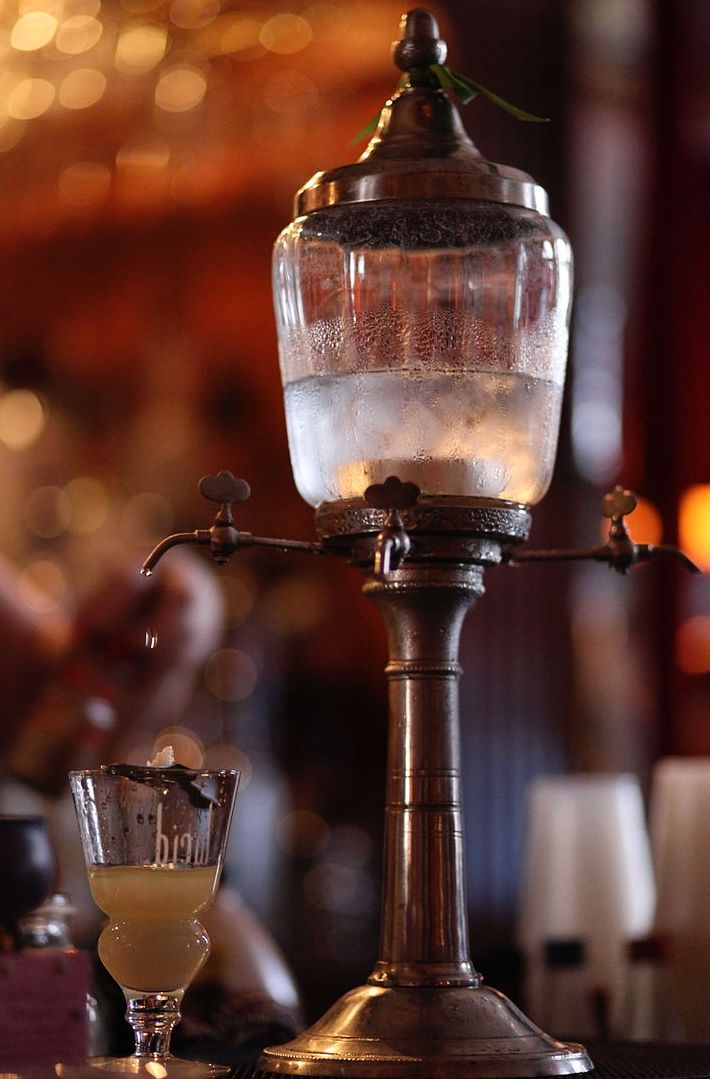
An "absinthe fountain" that can be used to drip water onto the sugar cube positioned over your absinthe glass. Image: Wikimedia / Autopilot
THE BOHEMIAN METHOD The Bohemian method — sometimes referred to as "Cooking the Absinthe" or "The Flaming Green Fairy" — is just like the French method only it's better 'cause it involves fire! OK, deciding which method is better is definitely a subjective call, but still... fire. https://giphy.com/embed/bAIBHXAhTxhks To execute the Bohemian method, you're basically going through the same steps as the French method, except you're going to soak your sugar cube in absinthe before putting it on the slotted spoon. Once you've placed the slotted spoon over the glass and the absinthe-soaked sugar cube on the slotted spoon, you go ahead and light that little cub-y cube on fire. Then you flip the slotted spoon over, drop the flaming sugar cube into the absinthe, and then pour a small shot glass full of water into the absinthe to douse the flaming cube. Supposedly this method produces a stronger drink than the French method, although most absinthe connoisseurs tend to reject this method as inferior to the French method because they say that the heat from the flame destroys the absinthe flavor and also stands as a fire hazard. THE "BACKDRAFT" METHOD This method for drinking absinthe is really simple, but it is dangerous. We repeat: THIS IS A DANGEROUS THING TO DO, so don't say we didn't warn you, OK? Basically, all you need to do to nail the backdraft method for drinking absinthe is grab a shot glass, fill it with absinthe, light the absinthe on fire with a lighter, and then put said fire out with the palm of your hand. Yeah, that's right, you'll need to put your hand over the fire to pull off this method. (Remember how we told you that THIS IS A DANGEROUS THING TO DO?) https://giphy.com/embed/xT8qAXGvGcFqKLchos Make sure that your palm covers the entirety of the shot glass, because it's the airtight suction of your palm against the rim that'll deprive the fire of oxygen and immediately put out the flame. Aside from making sure that your hand covers the entire shot glass and makes an airtight seal, you'll also want to make sure that you get your palm on that shot glass pretty fast — the longer you let the flame burn the hotter the glass will get. Also, the longer you let the flame burn the more the flavor of the absinthe will be negatively affected. DRINKING ABSINTHE IN COCKTAILS Finally we have the option to drink absinthe in cocktails, which, if you're practicing making drinks at home, is obviously the most important "drinking method" you'll want to experiment with. And while we give you plenty of absinthe recipes to try in the following sections, in general you want to know a few things about experimenting with absinthe.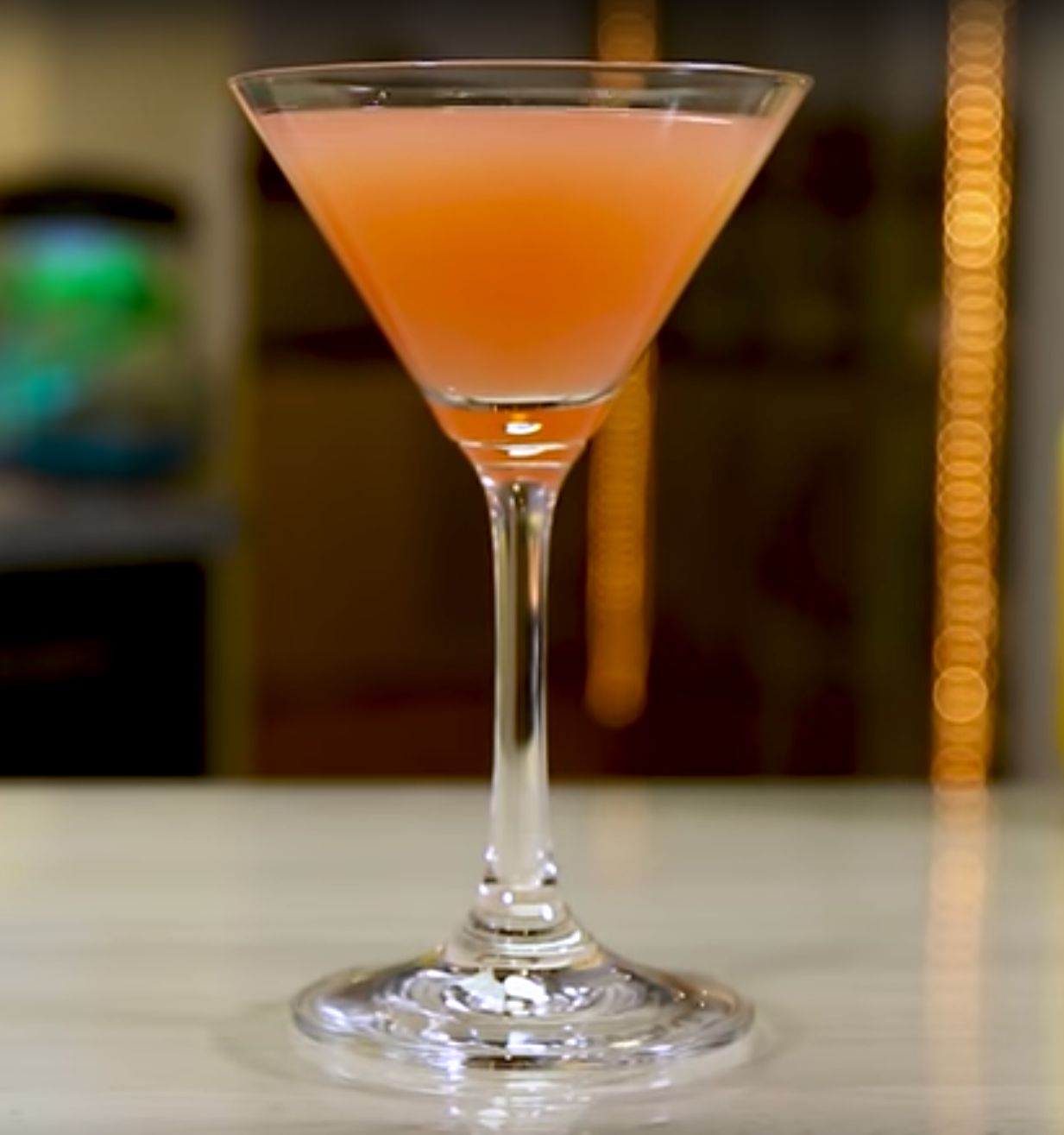
The Monkey Gland, a tasty absinthe cocktail. Image: Tipsy Bartender
In general, absinthe goes well with citrus juices like lemon juice, orange juice, pineapple juice, etc. Many absinthe cocktails also call for melon flavors, so definitely feel free to try mixing in some melon liqueur, whether it be honeydew, cantaloupe, or some other flavor. Other than that, there aren't too many rules of thumb you need to worry about. You can even try mixing absinthe with other liquors such as gin, although remember to be really careful 'cause these kinds of combinations can get you tipsy real quick.HOW TO STORE ABSINTHE
If you've made it this far in the Ultimate Absinthe Guide, you now know what absinthe is, how it's made, its history, the different types, and of course, how to drink it like a true pro. but there's one other thing you'll want to know to make sure you've mastered absinthe, and that's how to store it. It sounds like a simple topic — because it is — but there are still some tips that you'll want to keep in mind. They are as follows: 1. Store your absinthe in a glass bottle, right side up, away from direct sunlight. Make sure that the temperature around the absinthe doesn't exceed about 85 degrees Fahrenheit — especially for green absinthe — as any temperature higher than that will likely damage the chlorophyll in the absinthe. 2. Make sure to use a cork stopper for your absinthe, as other materials, such as metal or plastic, may not create an airtight seal, allowing some of the alcohol to evaporate. Also, if your bottle of absinthe is more than half empty, put your remaining absinthe in a smaller bottle that way the liquid doesn't become excessively oxidized (which would negatively affect flavor). 3. Although it may seem a bit counterintuitive, don't worry about (properly) storing your absinthe for months or even years on end. Some high-quality absinthes age quite well, in fact, which means you'll have something to look forward to when you're celebrating becoming an expert home bartender, or some other, less exciting occasion.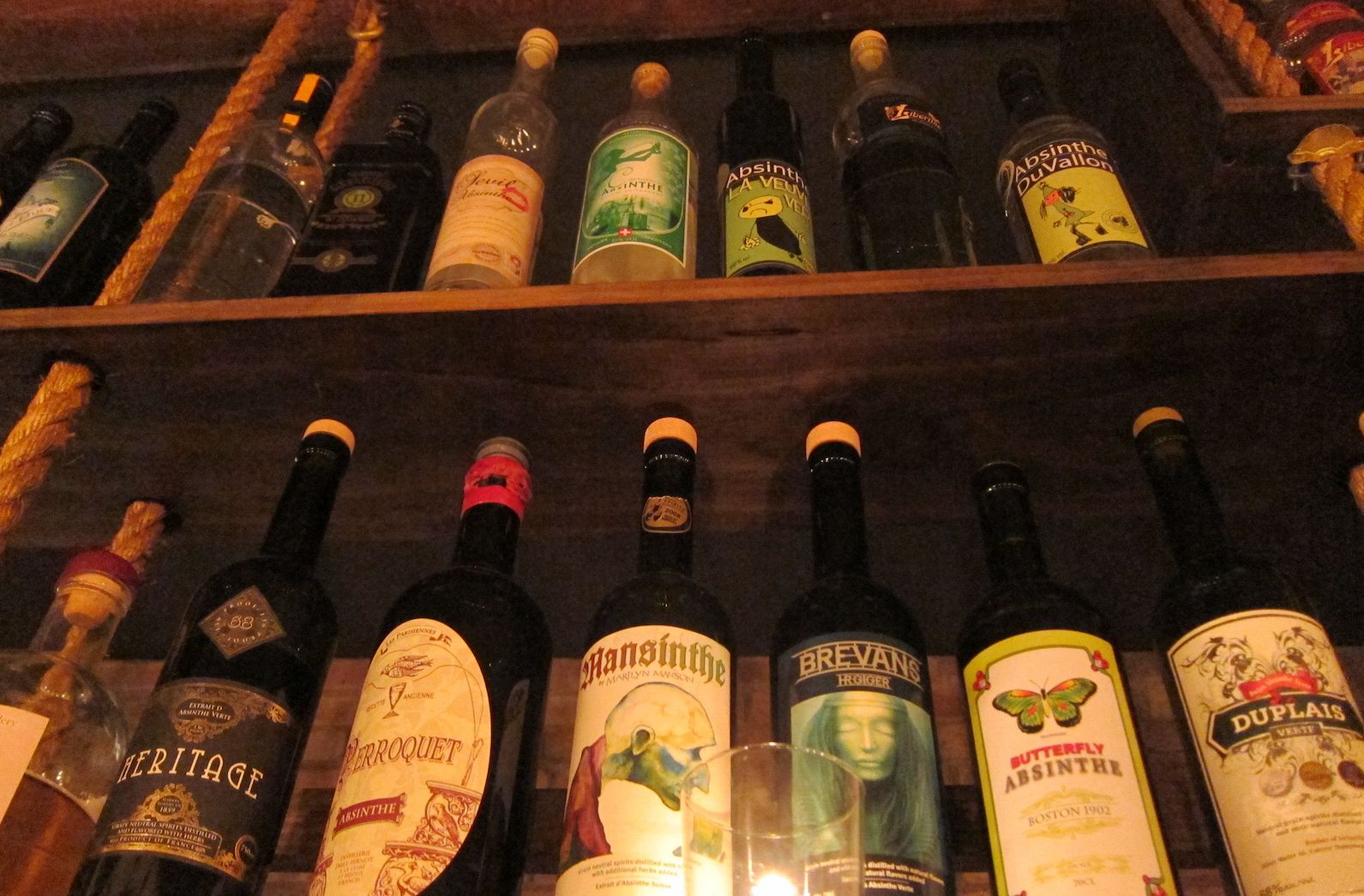
Ideal conditions for storing your absinthe. Image: Flickr / Gozamos
Side note: If you're opening a bottle of absinthe after a long period of storage, let it breathe a little bit before drinking it — this will allow the absinthe to aerate, which will soften its harsher flavors and also release some of the more pleasant aromas.THE FUTURE OF ABSINTHE
As far as the future of absinthe is concerned, there's not too much change expected in the coming years in regards to how absinthe will be produced or consumed. The biggest producers of absinthe are still France and Switzerland, and there's no evidence out there to suggest that that will be changing any time soon. Although it is reasonable to expect that absinthe will at least grow in popularity in Spain, Great Britain, the U.S., and the Czech Republic, where it already has a decent foothold. https://giphy.com/embed/3JTqZTfzLogTzSV9BS As a fun little side note, absinthe as a medication for stomach issues still seems to be one reason more people are gravitating toward it. Many still believe that drinking absinthe is a good way to balance out digestive tracts, stomach acids, and enzyme production, which supposedly happens because the wormwood in the absinthe stimulates saliva and stomach acid production. (It's still difficult to find any real scientific evidence for these claims though.)NINE OF OUR FAVORITE ABSINTHE DRINKS
1. DEATH IN THE AFTERNOON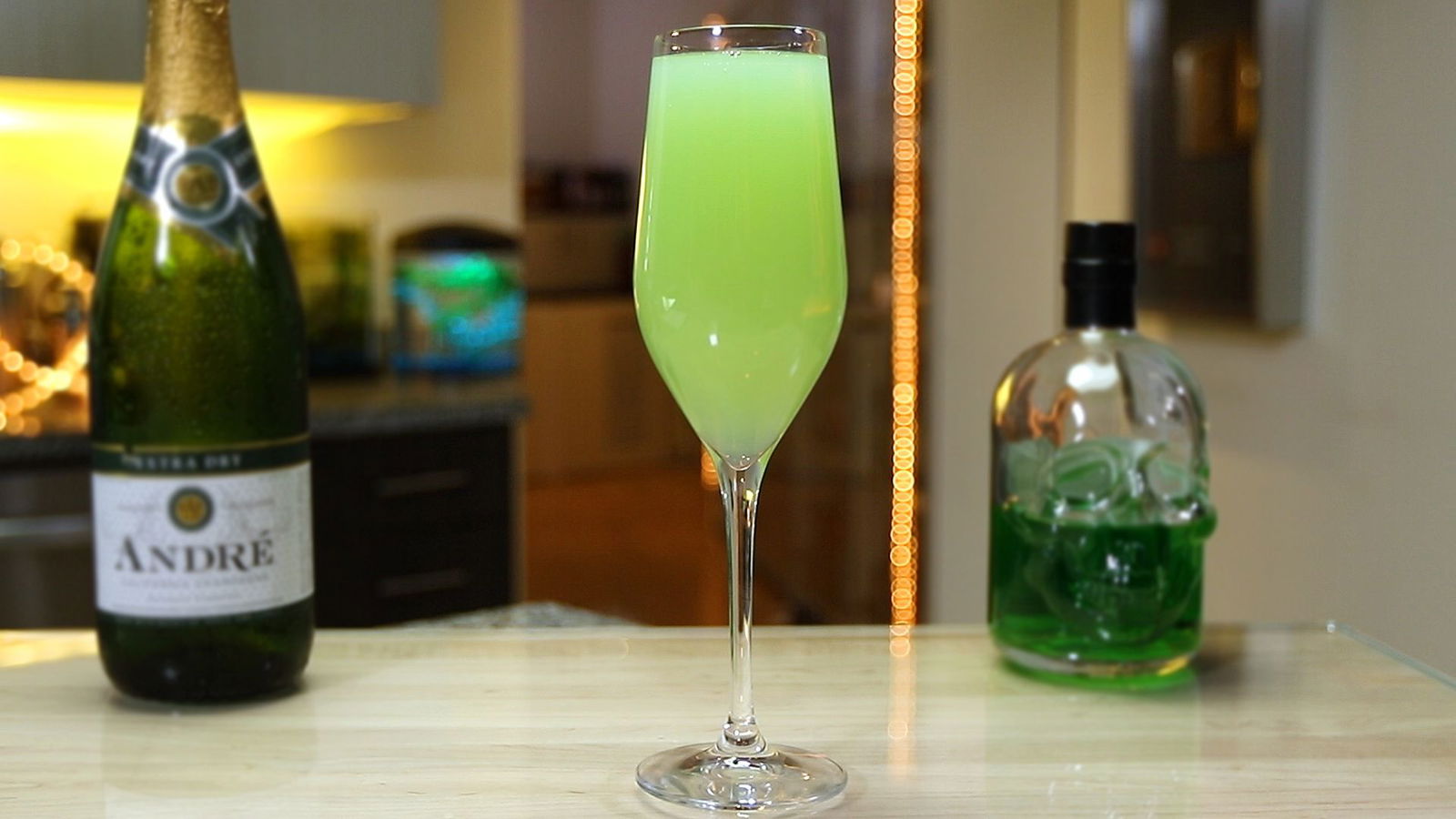 2. GREEN CLOUDS SHOOTER
2. GREEN CLOUDS SHOOTER
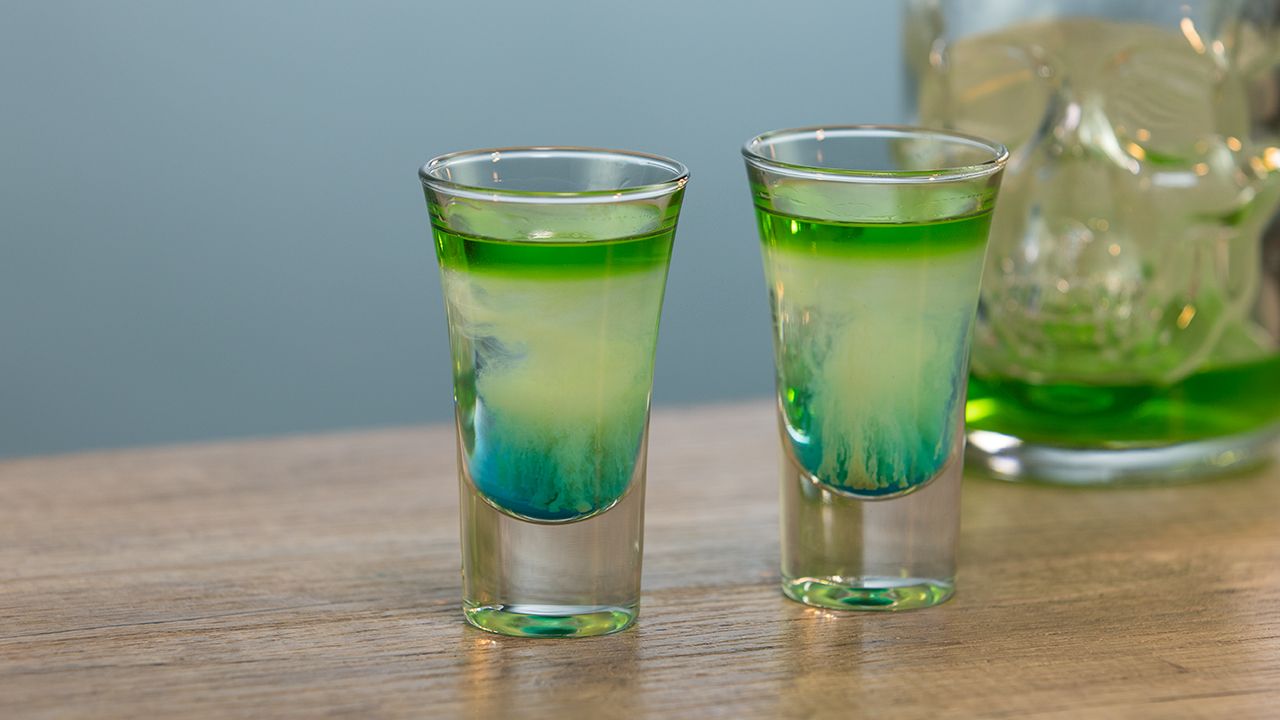 3. HIROSHIMA SHOT
3. HIROSHIMA SHOT
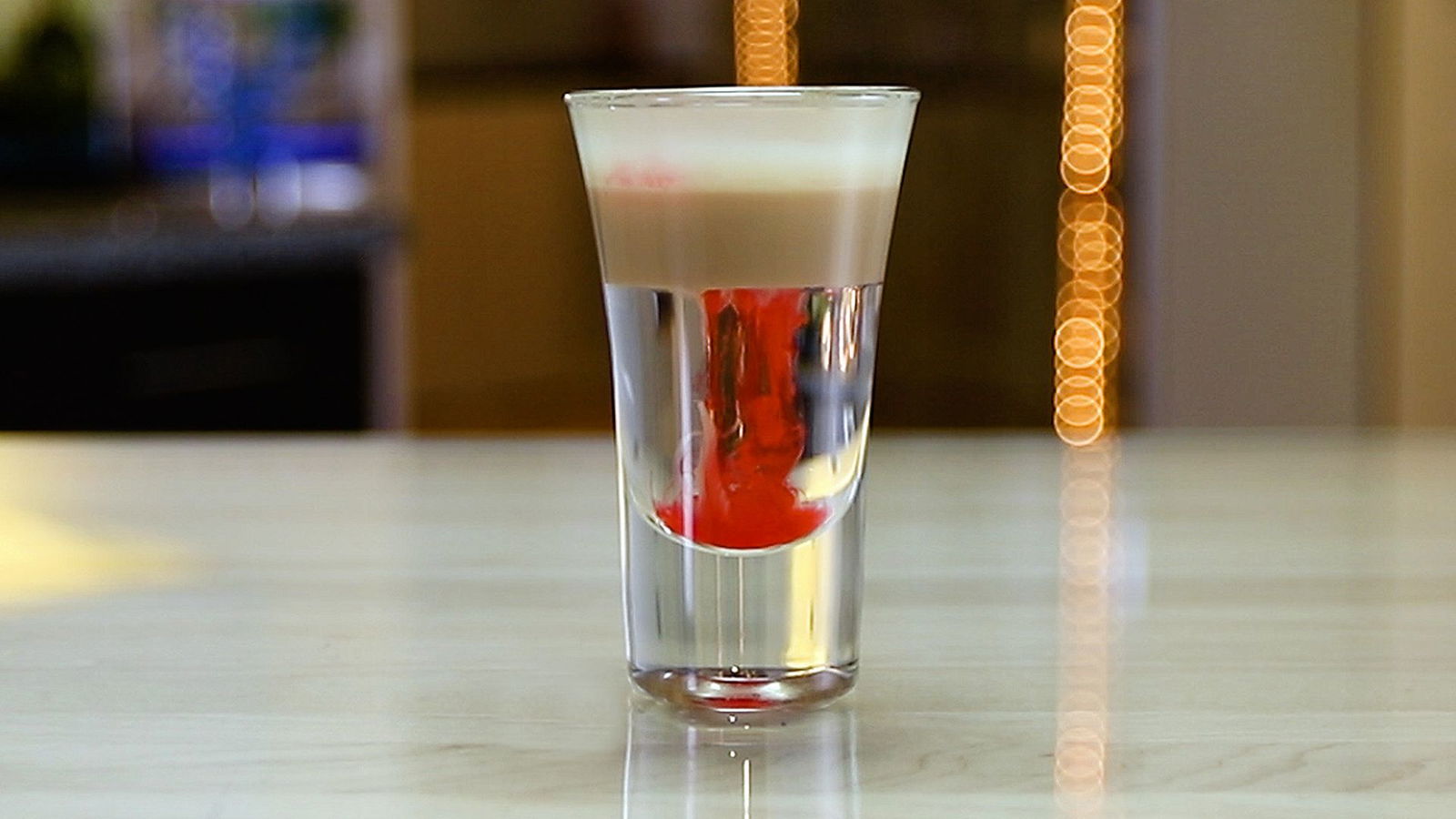 4. KLEMMENTINE SMASH
4. KLEMMENTINE SMASH
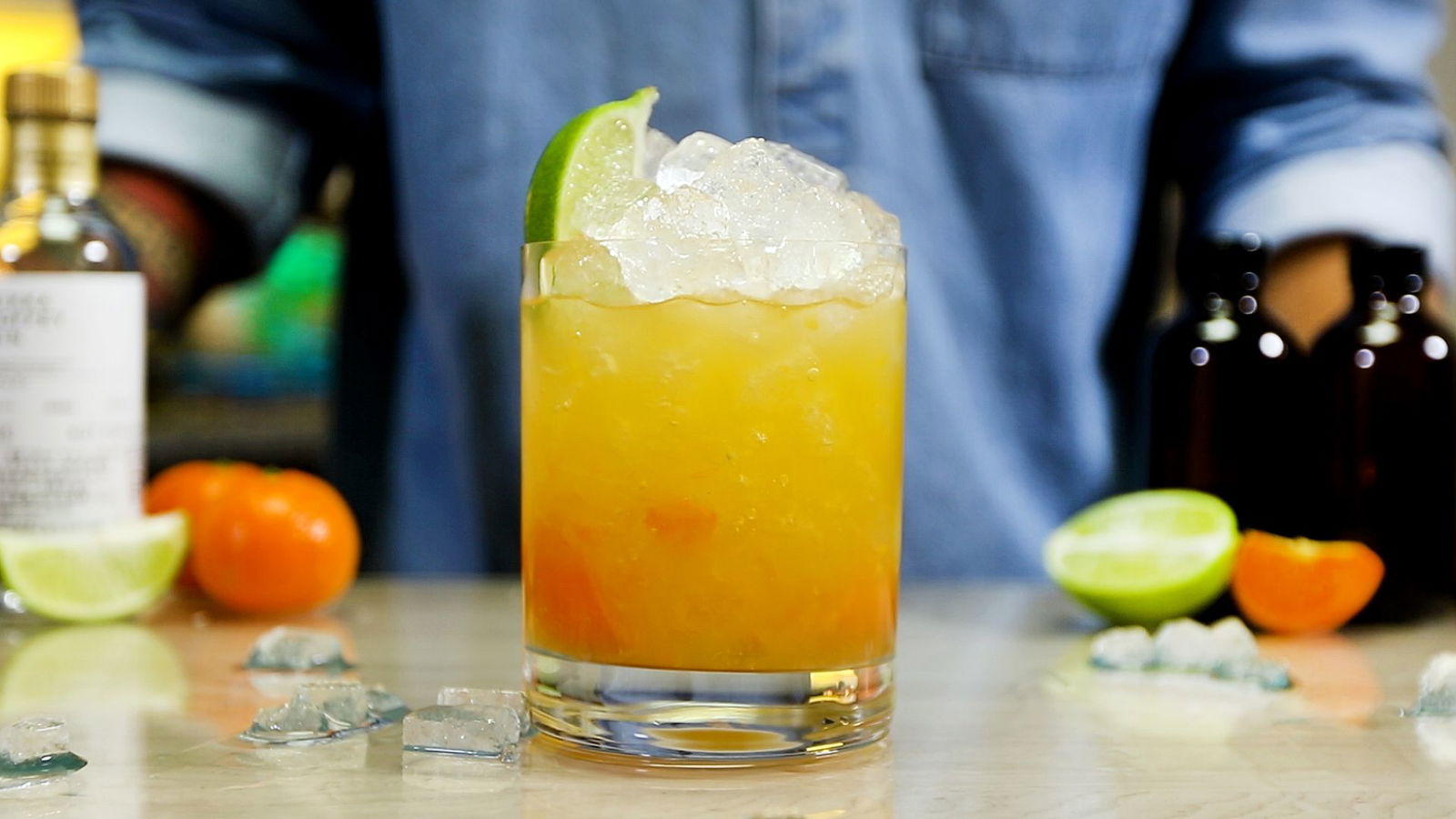 5. PEACE & HUMPTINESS FOREVER
5. PEACE & HUMPTINESS FOREVER
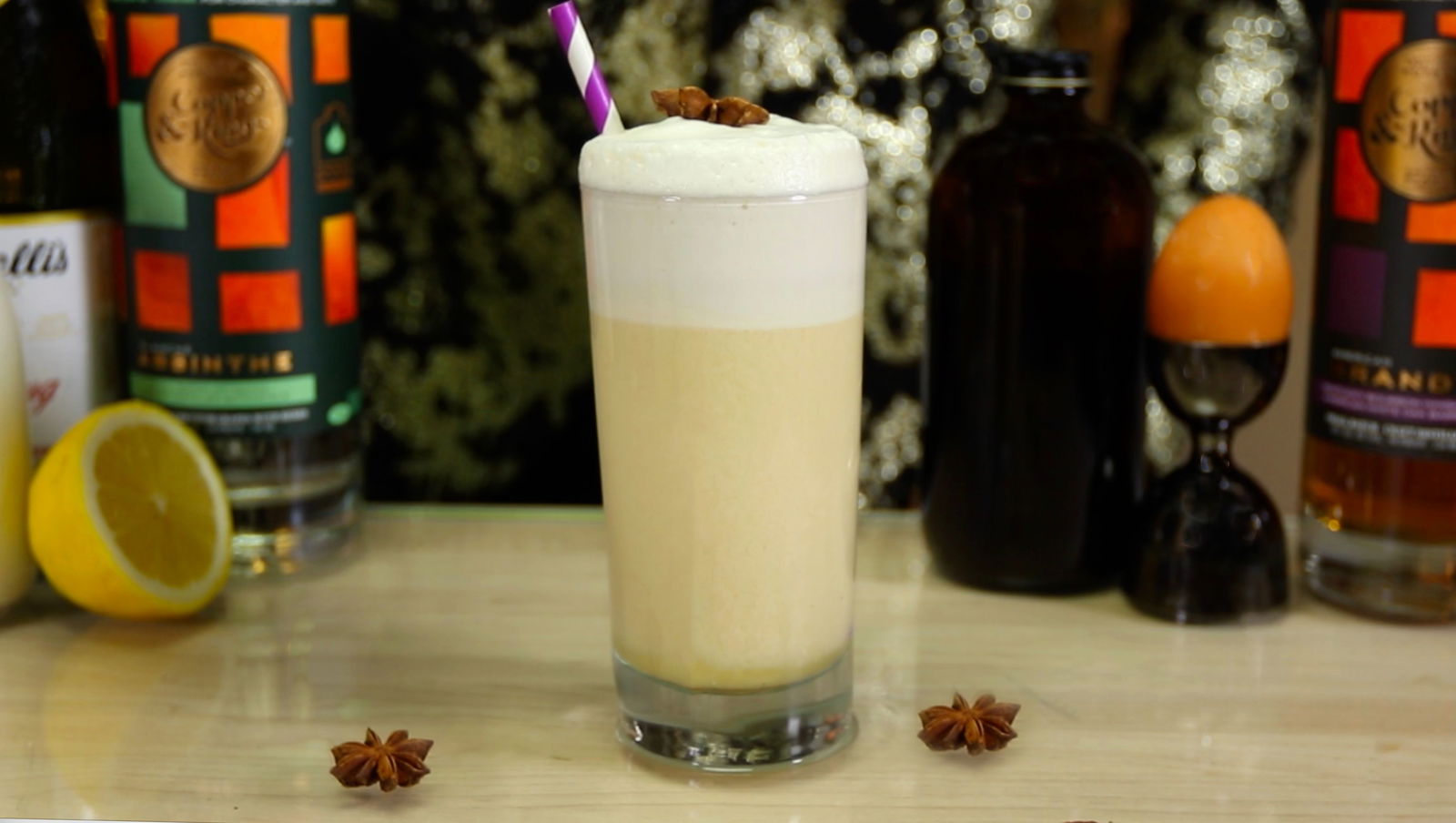 6. SURFER ON ABSINTHE
6. SURFER ON ABSINTHE
 7. THE FIERY ENTREPRENEUR
7. THE FIERY ENTREPRENEUR
 8. THE FORBIDDEN
8. THE FORBIDDEN
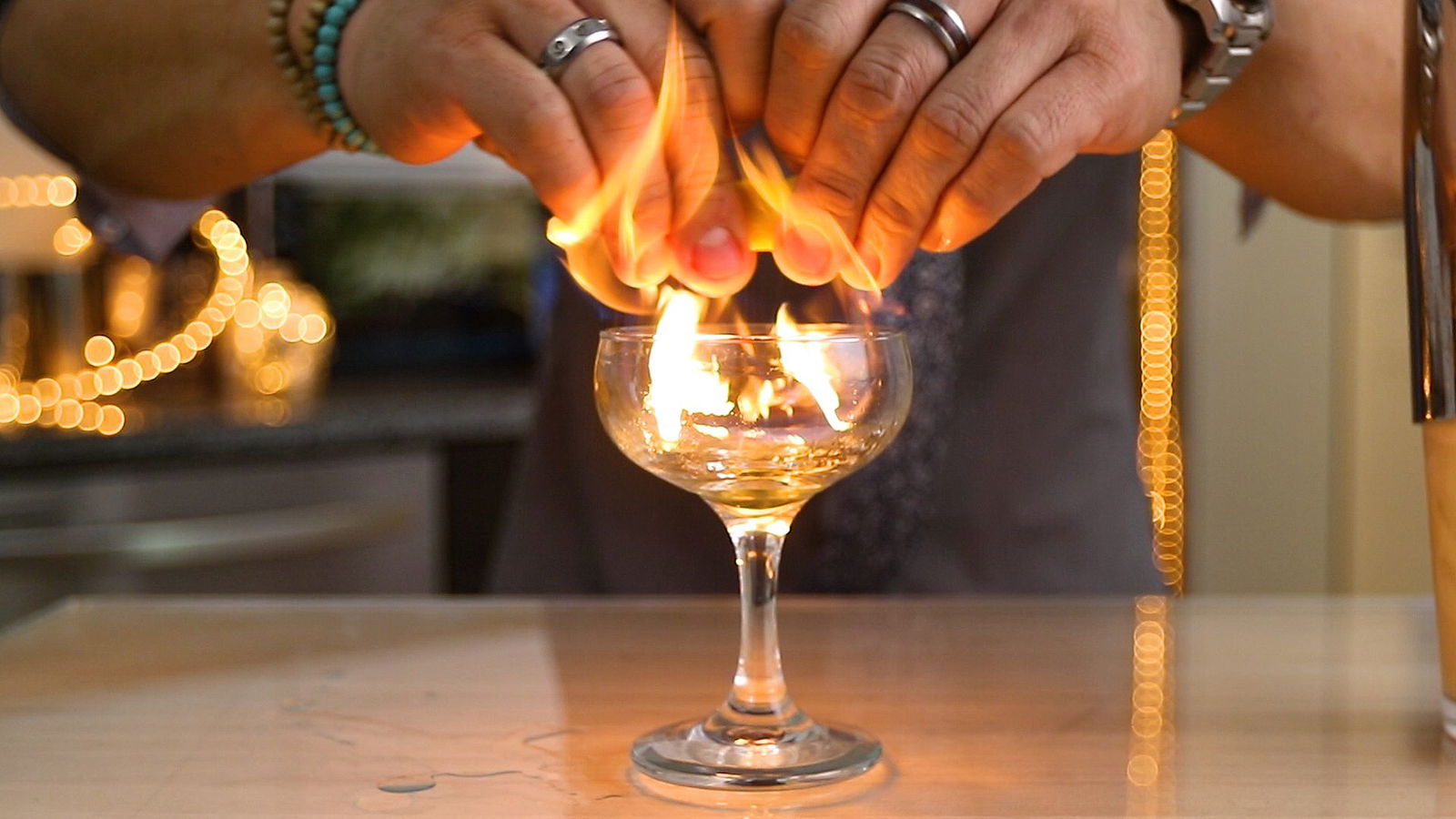 9. WOLF BITE SHOOTER
9. WOLF BITE SHOOTER
 GIFS: Giphy
GIFS: Giphy

Independence Day Drinks
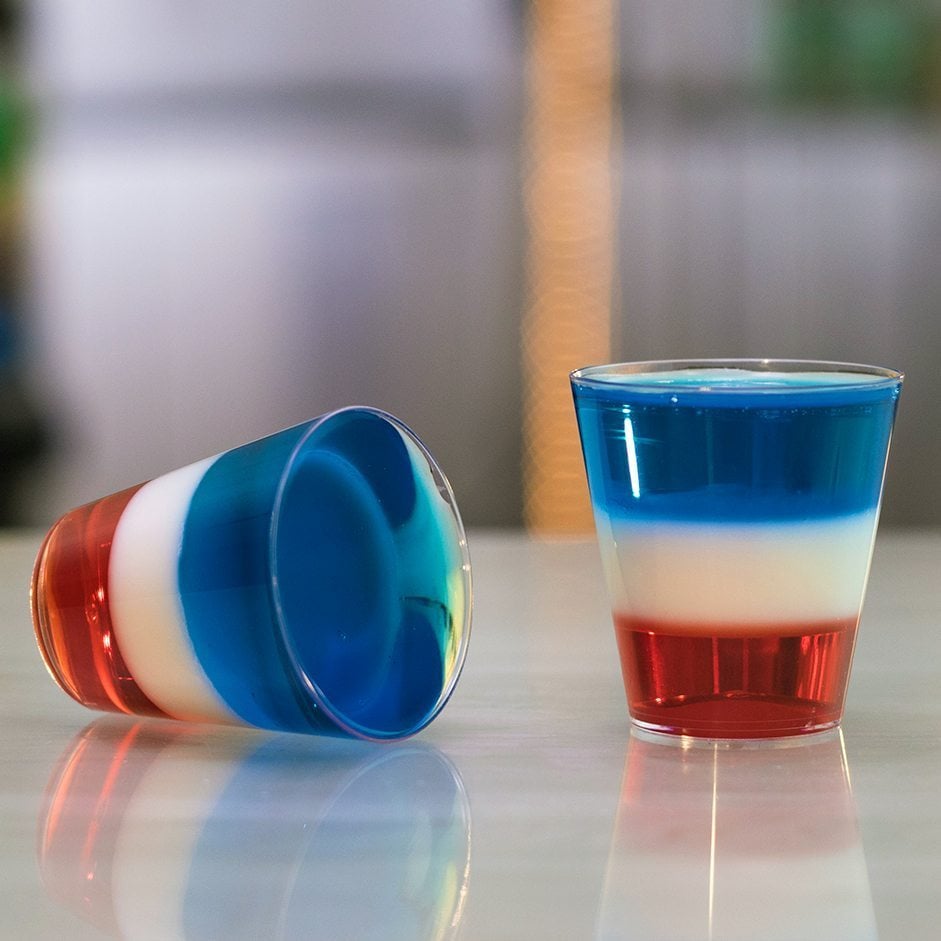
4th Of July All American Jello Shots

4th Of July Cake Vodka Milkshake

4th Of July Diversity Bomb Shot
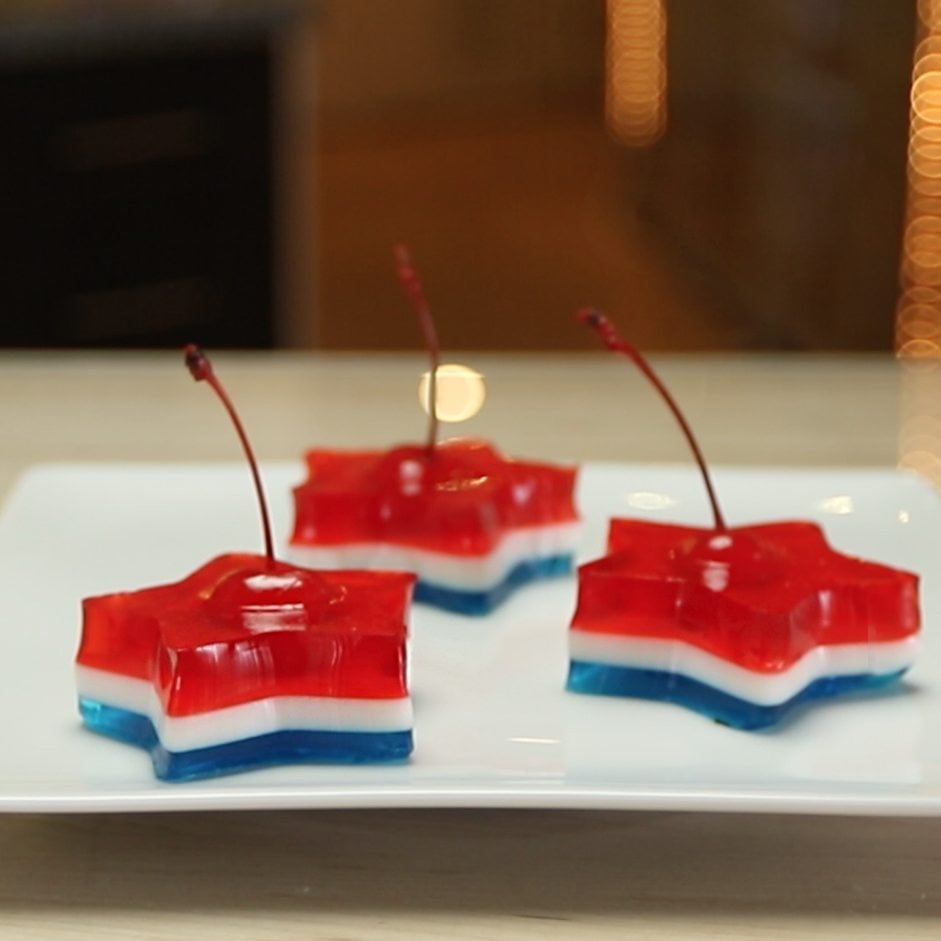
4th Of July Jello Shots
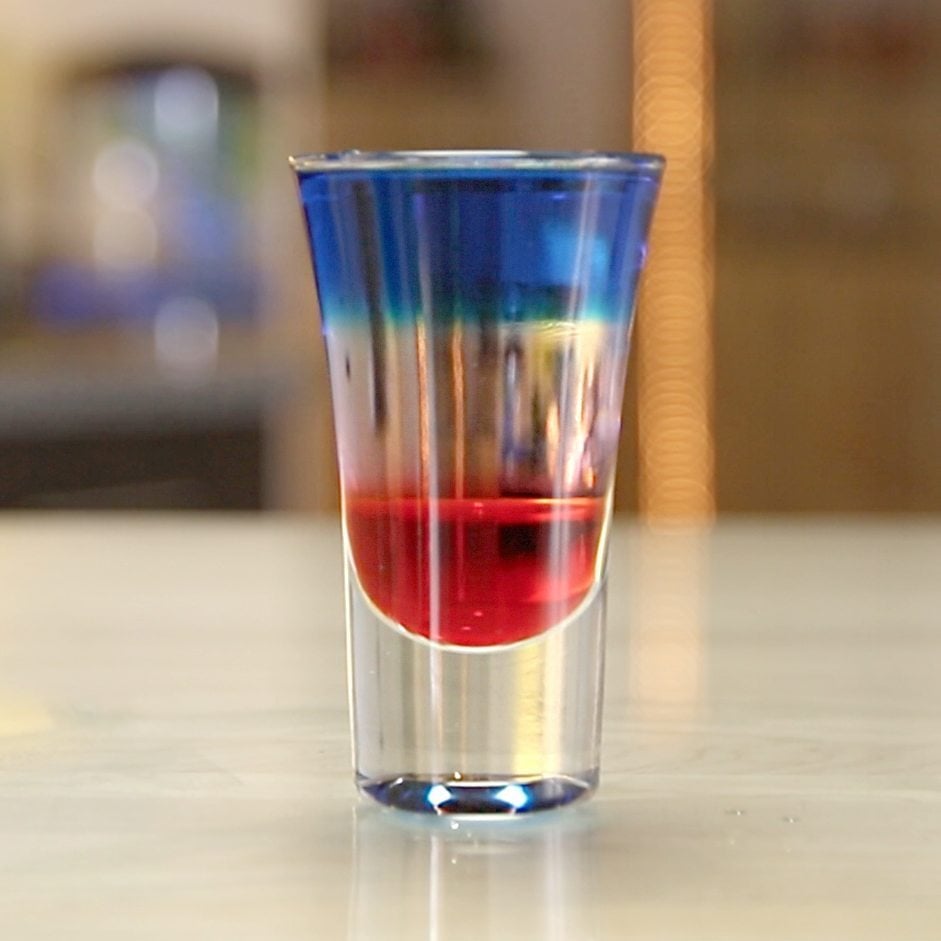
4th Of July Layered Shots
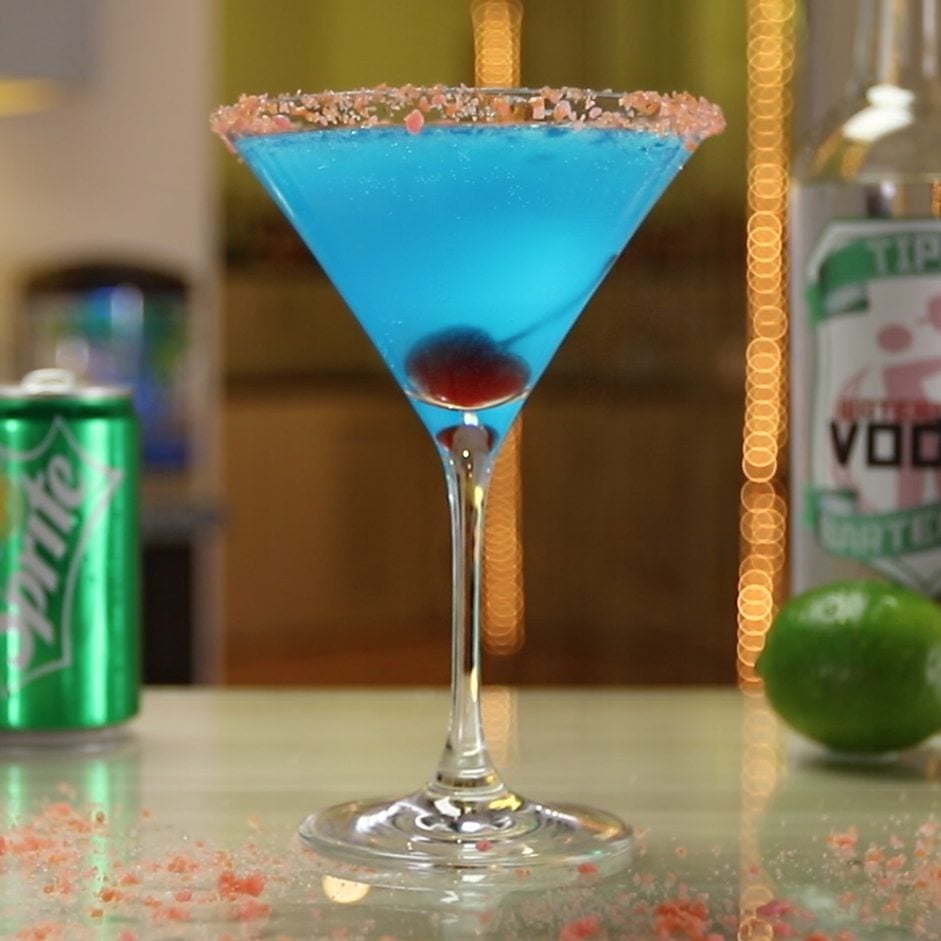
4th Of July Pop Rocks Martini
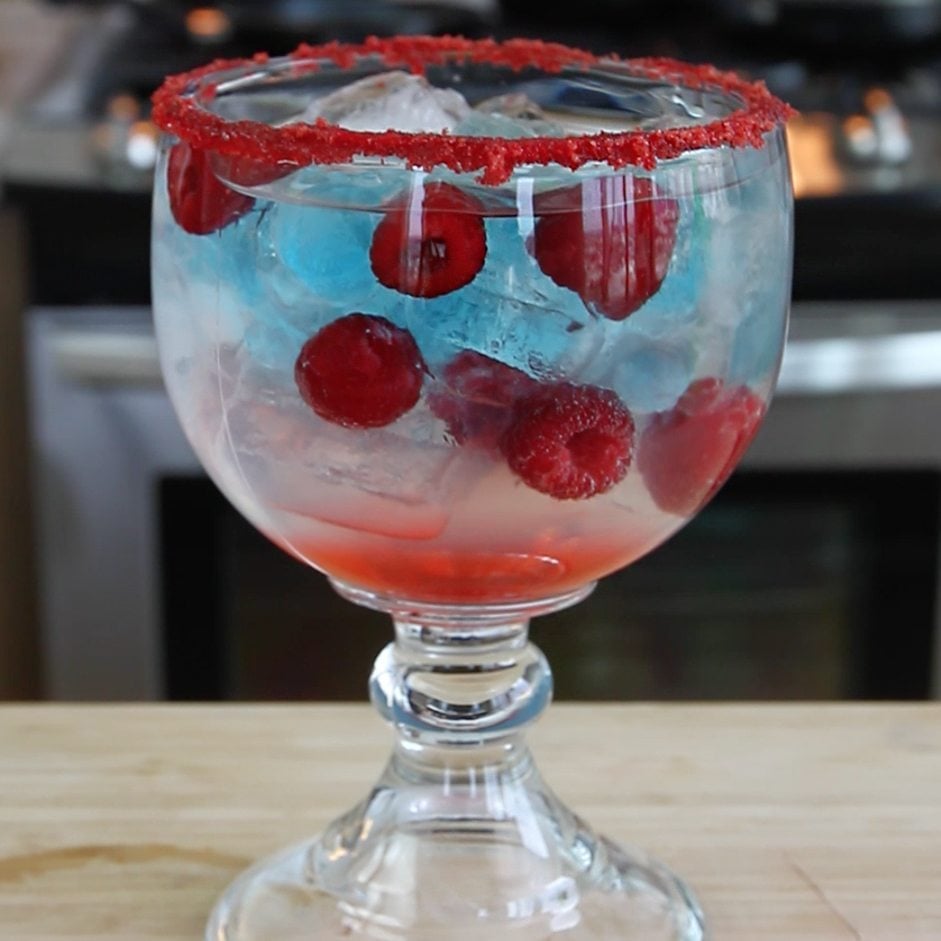
4th Of July Raspberry America

4th Of July Spiked Bomb Pops

4th July Popsicle Margarita
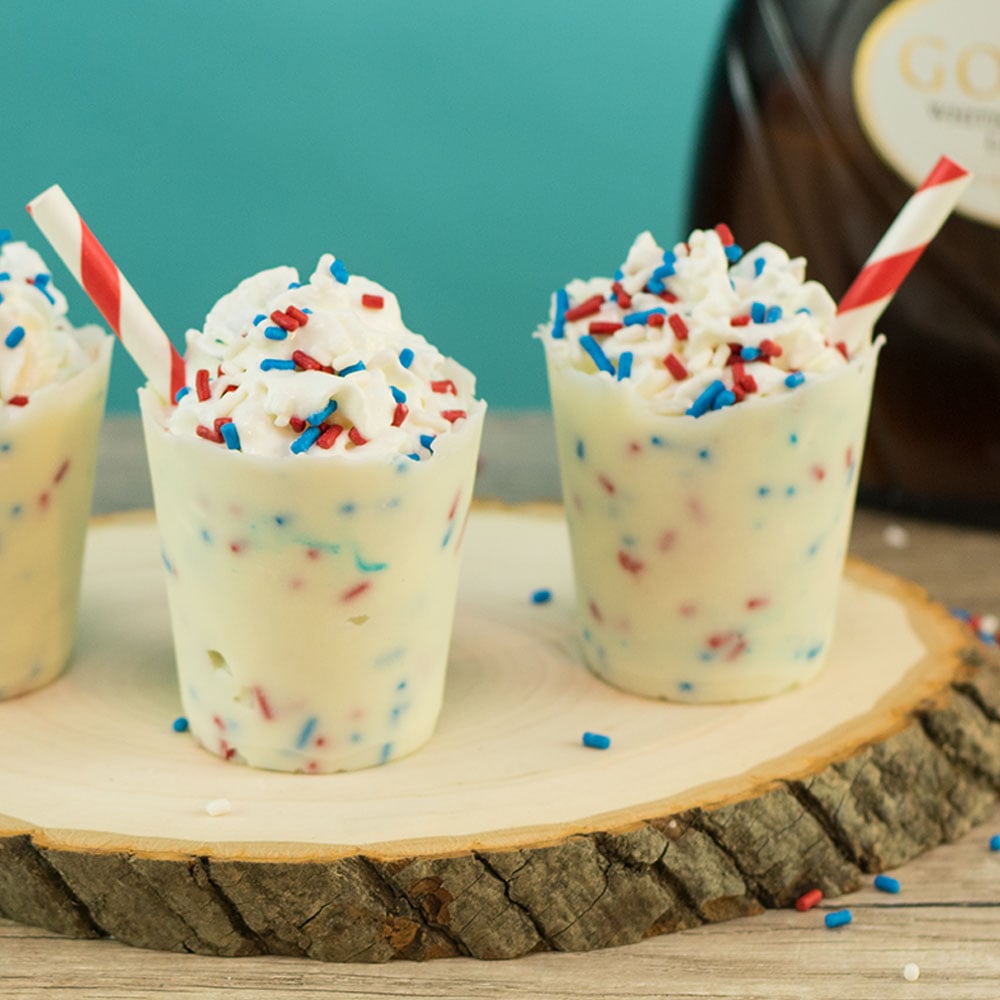
4th July Edible Shot Glasses
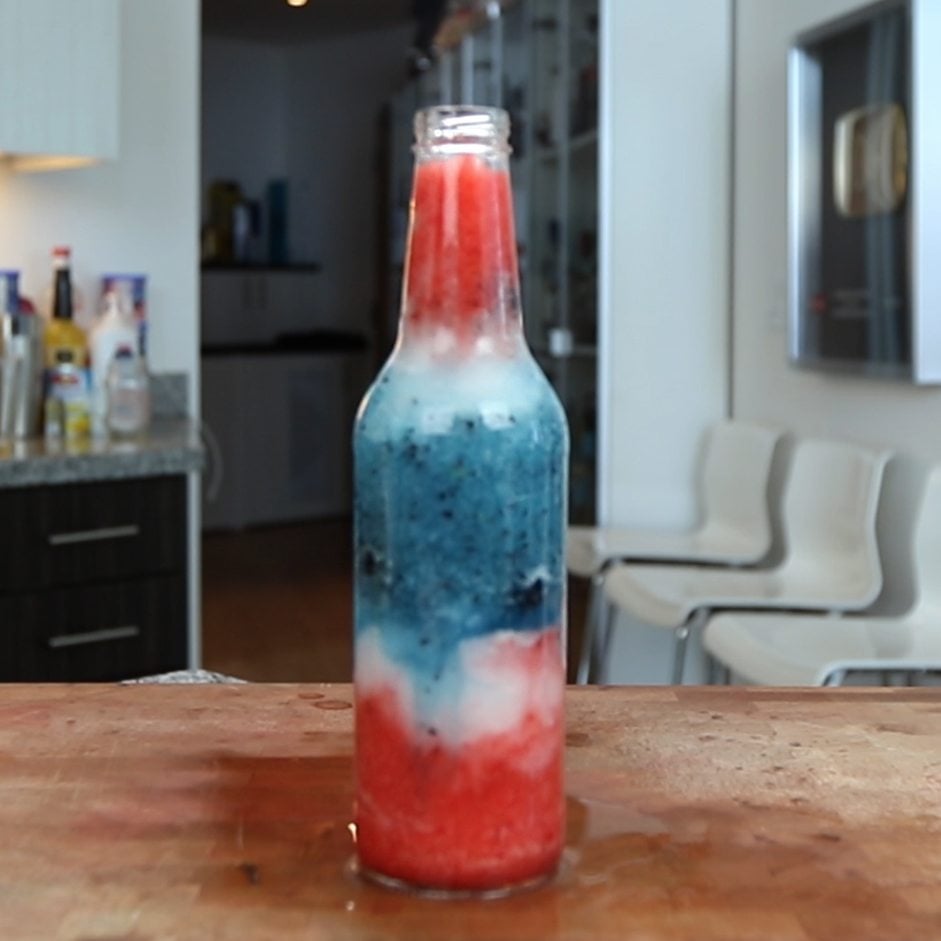
4th July In A Bottle
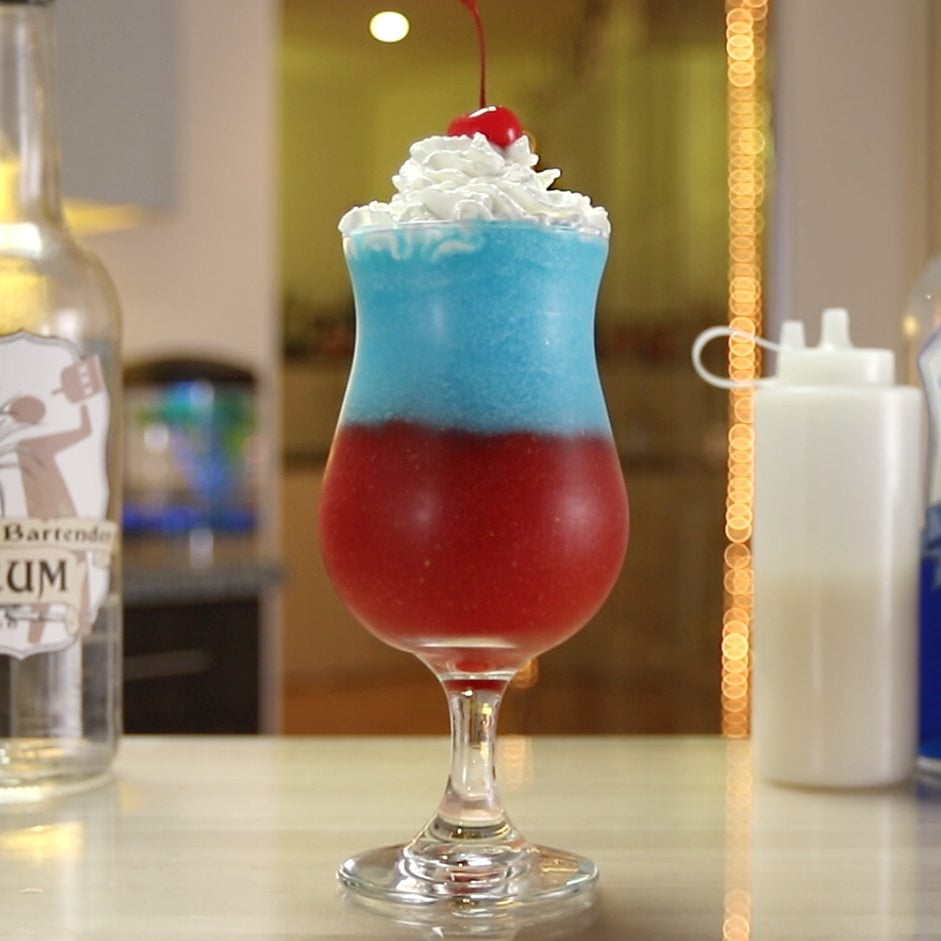
All American Daiquiri


